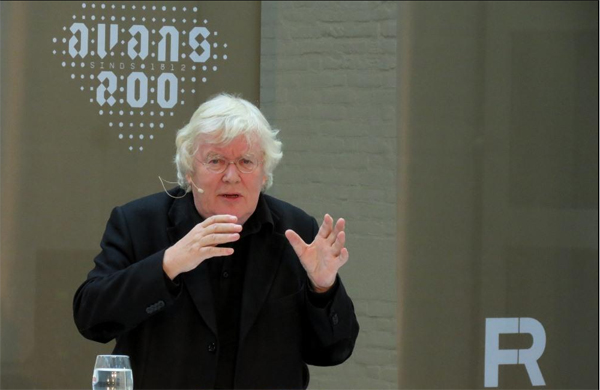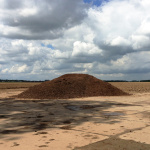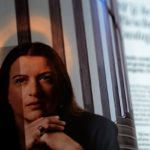'Brilliant Orange' (which is about Dutch football, really) has a whole chapter about how "Dutch…
Fuchs
So we have slipped out of Vermeer’s Street without saying goodbye: Amsterdam a skyline on the horizon only, Almere a growing presence on the opposite side of the Markermeer where we spent the day at anchor, swimming and reading and having a good time.
Started on a book that holds the consolidated writing of Rudy Fuchs, whom I have never met. I do have a very interesting Fuchs quote from the book ‘Brilloant Orange’ that Klaas Hoek made me read.
Page 53 To make sense of the vast flatness of their land, Fuchs says, the Dutch developed a way of calibrating distances from the horizon, calculating space and paying meticulous attention to every object within that space. Dutch art thus developed an extraordinarily precise and reverent approach to this reality.
Now I don’t really really understand what he means by this, but I am trying to work it out by photographing the Dutch horizon with obstacles inbetween. Interesting stuff. Hope for some more gems in his book “Tussen Kunstenaars” i.e. Among Artists.
Later: found my first pearl, in an essay on Mondriaan, page 59, my clumsy translation: In the flat Dutch delta, the horizon is a sharp straight line between land and sky, between heaven and earth. When it rains, this thin separating line is almost invisible, but even the silver-gray light of a rainy day is very translucent. We have no mountains that cast their shadow over the flat landscape. The land is soft and low and the sea is present everywhere.. The sea reflects the light back to the sky. Between the low land and the high sky there are trees and windmills and church spires, monuments that stretch themsces over the horizon. The painter from southern Europe will depict the horizon, unthinkingly, by drawing a curved line; the Dutch painter draws a straight line, for this is what his eye has been trained to do by the landscape. Then a church spire or a tree brings a vertical to the horizontal space of the painting, looking up through the limbo’s of the tree, the painter sees a sky that is seldom without wind and clouds. The unavoidable image is transparant and clear.
This has been carried by Dutch art through the ages, like a procession, up until Mondriaan. The image is serene and balanced, not like Italian paintings. Lines and colors make the image go quiet. The painter looks at objects and images until they stand still and take the shape he wants: this is Mondriaan’s art. Even that abstract art stems from the eye.
| « Vermeer’s street multiplied | <-- previous post | next post --> | Galaxy » |
|---|








